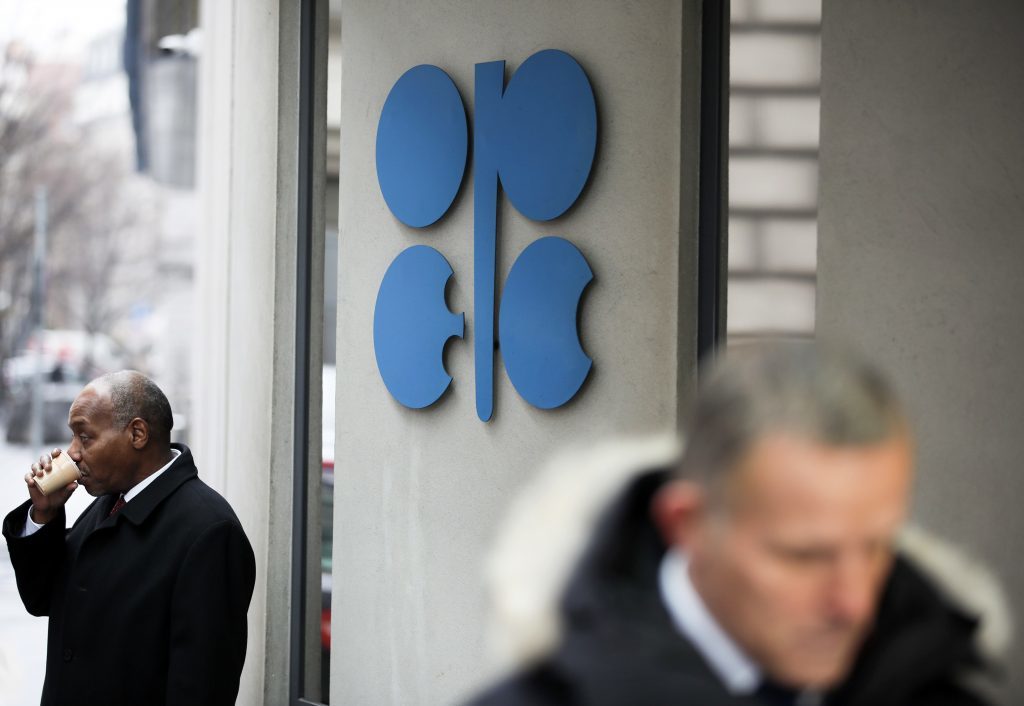
The unintended consequence of OPEC’s quest to drain a global oil glut may be a sharp rise in price volatility as the buffer against worldwide turmoil and disruptions is stripped back.
Due to the glut, suicide bombers in the Iranian capital, independence efforts by Iraq’s Kurdistan region, and war in Syria and Yemen are among a number of flareups in, or near, key producing regions in the past few years that barely registered on oil markets. In some cases, prices fell when they would previously have jumped.
Now, Citigroup Inc. is predicting a rise in supply disruptions that may drive oil to near $80 a barrel. And as the worldwide overhang eases, a frenzy of speculative buying and price spikes are likely to follow any unrest.
“When you have enormous stockpiles, these stockpiles serve to dampen and insulate the commodity from idiosyncratic shocks like supply disruptions, like geopolitical risk,” said Mark Keenan, global commodities strategist and head of Asia-Pacific research at Societe Generale SA in Singapore. “Moving to an environment where stocks are starting to draw, which is very much the trend at the moment, geopolitical risks start to play a more important role.”
Hot spots facing turmoil this year include Nigeria, Libya, Iran and Iraq, the second-largest producer in the Organization of Petroleum Exporting Countries, according to Citigroup and Energy Aspects Ltd. Supply losses from unplanned disruptions fell to 1.2 million barrels a day in July, the lowest level in more than four years, according to Australia & New Zealand Banking Group Ltd.
Warring factions continue to threaten attacks on oil facilities in Libya, crude infrastructure in Nigeria remains vulnerable to sabotage, Iraq is at risk amid simmering tension in Kirkuk and the Iran nuclear deal remains fragile, Daniel Hynes, an analyst with ANZ Bank said in a note. Any rise in disruptions will have a significant impact on prices as the global glut drains, he said.
‘Wildcard’
Turmoil in these OPEC nations along with continuing disruption in Venezuela could result in supply losses of more than 3 million barrels a day, Citigroup analysts including Ed Morse, the bank’s head of commodity research, said in a note titled ‘Wildcards for 2018.’ Prices may trade between $70 and $80 a barrel if this occurs during the first half of the year, Citigroup said.
To be sure, while OPEC’s cuts may shrink one safeguard against volatility, they may help create another. As the organization reduces oil production, member nations increase the amount of spare output capacity that can be tapped in the event of a disruption.
The group’s spare capacity has ballooned to about 3.4 million barrels a day, as of November, compared with about 2 million a day at the outset of the production curbs, data from the International Energy Agency show.
OPEC and its allies including Russia expect the market to rebalance this year after almost 24 months of supply curbs. The International Energy Agency sees a modest surplus during the first half of 2018 turning into a modest deficit during the second half. The improving fundamental picture has helped drive oil price gains, with Brent climbing as high as $71.05 a barrel on Thursday, the highest intraday level in more than three years.
“We’re at the point where most of that inventory buffer is gone,” said Richard Mallinson, a geopolitical analyst at Energy Aspects in London. “There also isn’t a lot of readily available spare capacity to meet a sudden major supply loss and that’s a reason for the market to pay close attention to disruptions.”
Recommended for you
